#Langtry
Explore tagged Tumblr posts
Text








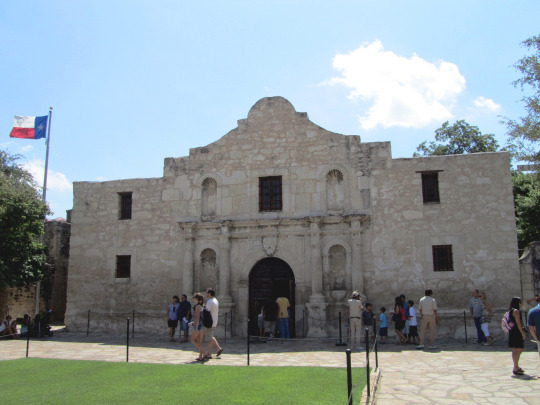









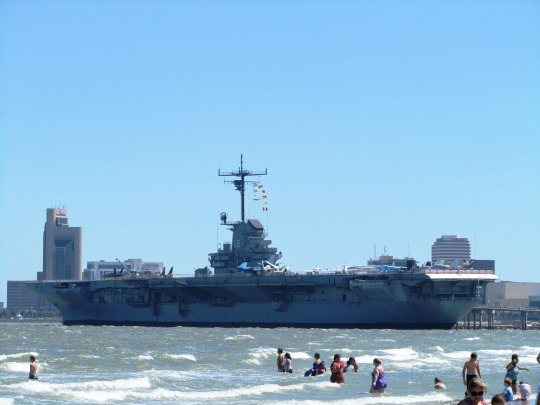









Texas Independence Day
Texas Independence Day on March 2 commemorates the signing of the Texas Declaration of Independence on the same date in 1836. Inhabitants of Texas proclaimed independence from Mexico and established the Republic of Texas with the signing of this declaration by over 59 delegates.
Children’s events, re-enactments, live band music, and cook-offs are all part of the festivities. Storytelling sessions about how Texas gained independence from Mexico and became a republic are among the other activities.
History of Texas Independence Day
A congress of Texians and Tejanos convened at Washington-on-the-Brazos during the Texas Revolution and declared Texas’ independence from Mexico, and they became known as Texans. The delegates elected David Burnet as interim president and confirmed Sam Houston as commander-in-chief of all Texas armies.
In addition, the Texans adopted a constitution that guaranteed the unrestricted practice of slavery, which had previously been banned by Mexican law. In the meantime, in San Antonio, the Alamo was still under siege by Mexican General Antonio de Santa Anna, and the fort’s defenders awaited the last Mexican attack.
Santa Anna ordered his troops to invade the Alamo on March 6. The first and second Mexican charges were defeated by Travis’ artillery, but the Texans were overpowered in less than an hour, and the Alamo was seized. All of the Texan and American defenders were murdered in fierce hand-to-hand combat when Santa Anna instructed that no prisoners should be taken. The Alamo’s only survivors were a small group of civilians, chiefly women and children. During the siege and storming of the Alamo, hundreds of Santa Anna’s soldiers died.
Six weeks later, at San Jacinto, a huge Texan army led by Houston surprised Santa Anna’s forces. The Texans overpowered the Mexicans and took Santa Anna. The dictator was forced to acknowledge Texas’ independence and withdraw his troops south of the Rio Grande. Nine years after the Texas Declaration of Independence was written, the Republic of Texas was annexed to the United States by the collective agreement of the United States Congress.
On December 29, 1845, the United States Congress officially recognized Texas as a member of the Union. Sam Houston Day and Texas Flag Day are also celebrated on March 2, albeit they are not legal holidays.
Texas Independence Day timeline
1835
The Texas Revolution Begins
The revolution begins on October 2 as a rebellion instigated by colonists from the U.S., supported by Tejanos, to oppose Mexico’s centralist government.
1836
The San Jacinto Battle
The Republic of Texas wins its independence on April 21 with victory at the San Jacinto River.
1845
Texas Joins the Union
On December 29, the United States Congress recognizes Texas as a constituent state.
1846
The Mexican-American War Begins
Mexico goes to war with the United States over the Republic of Texas’ annexation.
Texas Independence Day FAQs
How do Texans greet one another?
“Howdy,” the official Texas greeting, is much more than a witty remark voiced by Woody, the “Toy Story” cowboy. True Texans use the word as a popular greeting.
Can Texas leave the U.S. legally?
Texas v. White, a landmark Supreme Court ruling, says that states cannot leave the union by state legislation.
What is the slogan of Texas?
In February 1930, the Texas state motto of friendship was established. The slogan was probably chosen because Texas, or Tejas, was the Spanish translation of the native Indian tribe’s “thecas or teyshas”, which means “friends or allies.”
How to Celebrate Texas Independence Day
Attend a festival: Attend one of the festivals held on Texas Independence Day to celebrate. There are tons of activities for children and adults to have a fun time.
Participate in a reenactment: Join a reenactment of the famous events during the Texas Revolution. Play dress-up and reenact the battle of the Alamo with friends.
Learn more about Texas: Texas has a lot to offer. From excellent barbecues to live music, the Lone Star State has tons of attractions and rich history.
5 Facts About Texas That Will Blow Your Mind
Dr Pepper was made in Texas: Dr Pepper was first publicly introduced in 1904 and is now distributed all over the world; it was invented in 1885 by Charles Alderton in Waco, Texas.
First frozen margarita: Mariano Martinez, a Dallas restaurateur, invented the first frozen margarita machine.
Six flags: Texas’ Six Flags theme park is named after the six countries that have presided over Texas; Mexico, Spain, the U.S., France, the Confederate States of America, and the Republic of Texas.
Powers that be: Texas has an independent power grid, it is separated from the rest of the United States.
Nightcrawlers: Bracken Cave in Texas houses North America’s largest bat colony.
Why We Love Texas Independence Day
It’s a source of inspiration: The story of the Texas Revolution is the perfect example of snatching victory against the odds. The Texans made the impossible a reality when they defeated their Mexican rivals who far outnumbered them.
It’s a crucial page in the history books: The road to independence is a story that will be passed down for generations in Texas. The legendary battles and tales of bravery will be remembered for years to come.
Appreciating the war heroes: Texas Independence Day is an opportunity to honor the sacrifice of those who fought for Texas’ independence. Their names are not forgotten and their deeds remain fresh in the memories of their successors.
Source
#Texas Independence Day#Palo Duro Canyon State Park#2 March 1836#USA#Texas Declaration of Independence#anniversary#Texan history#US history#landscape#countryside#cityscape#architecture#summer 2014#2011#Adrian#Midpoint Route 66#Austin#the Alamo#Texas State Capitol#San Antonio#Cadillac Ranch#Amarillo#Corpus Christi#Gulf of Mexico#Pecos River High Bridge#Langtry#travel#original photography#vacation#tourist attraction
8 notes
·
View notes
Text
Es geht weiter mit der Texasreise 2024 - wir fahren nach St. Antonio
#Alpine#Amerika#Amistad Recreation Area#Big Bend Saddlery#Chicken Wings#Comstock#Crockett Tavern#Davis Mountain#Francis Ford Coppola#Glass Mountain#Hard Rock Café#Hotel Crockett#Jackass Mail#Langtry#Matthew McConaughey#Monarchfalter-#Pecos-River#Reisen#River Walk#Riverwalk#Roadtrip#Ry Cooder#Sabinal#Sam Elliott#San Antonio#San Antonio-San Diego Mail Line#San Fernando Cathedral#Seminole Canyon State Park and Historic Site#Städtetrip#Texas
0 notes
Text

Le Figaro-modes, no. 26, février 1905, Paris. Mrs. Lillie Langtry, avec un chapeau Lewis. Ville de Paris / Bibliothèque Forney
#Le Figaro-modes#20th century#1900s#1905#this month#February#periodical#fashion#fashion plate#photograph#Forney#dress#coat#Lillie Langtry#one color plates
69 notes
·
View notes
Text

Group of great spangled fritillary butterflies
Courtesy Karen Langtry
36 notes
·
View notes
Text

Lily Langtry and Sarah Bernhardt
Photographer: Napoleon Sarony (1821-1896)
Date of photo circa 1887
printed: by Napoleon Sarony
87 Union Square North, NY, NY
Stamped: MRS. LANGTRY AND SARA BERNHARDT \ COPYRIGHT 1887 BY NAPOLEON SARONY.
Credit Line Amon Carter Museum of American Art, Fort Worth, Texas, Gift of Paul Katz, North Bennington, Vermont
Copyright Public domain
28 notes
·
View notes
Text
Here Are Some Weird And Wonderful Histories Of Cincinnati’s Most Famous Bathtubs
Over the years, Cincinnati has found itself tangled in some unique and curious bathtub mythology. Since so much of our city’s history involved the manufacture of soap, that may not be surprising at all. Here are some of the Queen City’s more iconic bathtub tales.
The Great Cincinnati Bathtub Hoax Cincinnati’s most famous bathtub never existed at all. It was created out of thin air on 28 December 1917, when a satirical essay by H. L. Mencken, titled "A Neglected Anniversary," was published in the New York Evening Mail. In this essay, Mencken claimed that the very first bathtub in the United States was installed in a Cincinnati home by one Adam Thompson in 1842. Further, Mencken claimed, “Some papers designated it as an epicurean luxury, others called it undemocratic, as it lacked simplicity in its surroundings. Medical authorities attacked it as dangerous to health.” Although this was totally “fake news,” and although Mencken himself was eventually compelled to expose his own hoax, the Great Cincinnati Bathtub Hoax was repeated as truth many times over the next century and still pops up as “fact” online today. Cincinnati, of course, puffed with pride on learning of the city’s pioneering role in American hygiene, to the extent that John Behle, manager of Cincinnati’s 1935 Municipal and Industrial Exposition, attempted to procure the antique vessel from Henry Ford for display! Ford, according to a rumor based on a rumor, had allegedly acquired Mr. Thompson’s non-existent tub for his own collection.

Cincinnati’s First Real Bathtubs It is very likely that the earliest residents of Cincinnati bathed in the Ohio River. As late as 1837, the revised City Ordinances of Cincinnati attempted to prohibit bathing in the river and even later, it was said that famed journalist Lafcadio Hearn only consented to indoor bathing when it was too cold to splash around our riverfront. Private citizens, when the urge struck them, performed their ablutions in the same washtub in which they did their laundry, but they could have used actual bathtubs as early as 1826 when Peter Gibson, a pioneer plumber, advertised his ability to install baths in Cincinnati homes. That was a good 16 years before Mencken’s imaginary tub. Although Cincinnatians had access to bona fide bathtubs as early as the 1820s, such laving basins were not often found in private homes but at Archibald Woodruff’s bathhouse. Woodruff led a colorful life. He was once arrested on orders from Napoleon himself, and he created Cincinnati’s first pleasure gardens. While engaged in various other business ventures, he maintained Woodruff’s Bath House on Sycamore Street across from the National Theater. There he offered warm, cold, shower, and salt-water baths. Woodruff advertised the availability of spare bathtubs for the benefit of invalids, to be delivered anywhere in the city.
Florentine Hotel Stakes A Claim Legend has it that no Cincinnati hotels offered in-house bathing until the Florentine Hotel – a short-lived establishment whose building was later occupied by a dime museum – installed a hefty bathtub in one of its upstairs rooms around 1860. To get this monstrosity, described as “large as a canal boat,” into the hotel a derrick was constructed on Vine Street. According to the Cincinnati Times-Star [14 December 1920], “Thousands of Cincinnatians viewed the tub as a great curiosity, as the thought of lying down while ‘taking a wash’ appealed to their sense of humor.”
Doctor Karshner’s Electro-Therapeutic Baths In 1858, Cincinnatians were invited to visit the Electric Infirmary of Doctor William Karshner on Barr Street in the West End to immerse themselves in the patented “Electro-Therapeutic” tubs available there. Inquiring patients found two metal tubs connected to galvanic batteries, one allegedly “negative” to “strengthen the system,” and the other “positive” to eliminate impurities. The patient reclined on an array of gutta percha straps, while scrubbing themselves with an electrified sponge. Doctor Karshner claimed his electrically charged tubs could cure syphilis, scrofula, delirium tremens, hysteria, consumption, asthma and a variety of mental conditions. He received a U.S. patent in 1859 for his “electrical bath,” and licensed his system to doctors up and down the Ohio River. After a couple of somewhat vague lawsuits against him and his wife, Doctor Karshner disappears from the historical record. He was the first, but far from the last, Cincinnati purveyor of electrical cures.

Floating Bath House The Floating Bath House, opened in the 1870s by brothers Robert and Rudolph Schmidt, was a sight to behold, 200 feet long and 50 feet wide and rising 15 feet out of the water. The center of the vessel had no floor, allowing swimmers to plunge into Ohio River water through an opening 65 feet long and 20 feet wide. Aligned with the river currents, fresh water flowed through the Bath House continually. The swimming area was surrounded by 68 dressing rooms supplied with a couple of towels, soap, a mirror and a bathing hose. Fore and aft of the main bathing area was an array of 24 private bathing areas – essentially, bath tubs filled with circulating river water. Naturally, the Floating Bath House raised protests from Cincinnatians. A letter, signed only “August” appearing in the Cincinnati Enquirer [30 May 1874], complained, “It is a well enough institution for private baths; but oh, for the public baths. At times there are at least sixty-five together in one tub. Is this not outrageous? Where do a great many young men go to spend their Sunday instead of going to church? They go to the river.” That complaint was confined to men because, before 1880, only men were allowed onto the Floating Bath House. Women gained access after years of complaint and enjoyed the joys of river-bathing two days a week, though always on the lookout for Peeping Toms.

Lily Langtry’s Apollinaris Water Bath In February 1883, legendary British beauty Lillie Langtry arrived in Cincinnati for an engagement at Robinson’s Opera House and took rooms at the Grand Hotel. Inevitably, her maid drew a bath, but after one glance at the murky, coffee-colored fluid Lily refused to subject her beauty to such treatment. It would be 25 years before Cincinnati filtered the water it pumped directly from the Ohio River. Miss Langtry dressed and hurried down to see the hotel manager. Struck by inspiration, he ordered enough Apollinaris water delivered to her suite to suffice for her bath. She was immediately satisfied, and the manager continued to send up bottles of the sparkling water throughout her stay at the hotel. An enterprising marketer for the Apollinaris water company, on learning of this creative use of his product, had a gold plate engraved to designate Room 100 of the Grand Hotel as the “Apollinaris Suite” and that plate hung on the door for the next 50 years. Generations of young men, inspired by visions of Lillie Langtry, sans clothing, immersing her voluptuous body into a tub of sparkling water, kept that room occupied for decades.
The Demon Bathtub of Cincinnati The Alta Flats, a respectable apartment building on the southwest corner of Sycamore and Fourth Streets, held a ghastly Gay Nineties secret. Two people, five years apart, died mysteriously in the same bathtub. Frank Cabell was the first to die, on a cold November day in 1893. He was 27, a clerk for a railroad and a dedicated student of Theosophy. One evening, Frank agitatedly told his brother, who roomed with him, that a “White Mahatma” had accused him of an unpardonable sin. Frank was found next morning with his throat slashed in the tub. Almost exactly five years later, on 6 Nov 1898, the coroner arrived at the very same apartment to find a dead, nude woman in the very same bathtub. Edith Garfield, aged 23, had drowned after what was described as a “debauch,” a “merry night,” and an “orgy” in the rooms then occupied by a well-known stationer. The dead woman was a prostitute “kept” by yet another man who worked as a cashier in his father’s bank. Also involved in the “debauch” was a married woman, who fled the flat after the body was discovered. No one was ever charged. Were the two deaths just a coincidence? Not according to the Enquirer, which opined: “Does the spirit of the great white Mahatma lure unfortunates on to death in the Alta apartment house?”
Procter & Gamble’s Imputed Bathtub It was just 20 years ago that a Procter & Gamble archivist disclosed evidence that the company had spent the previous 125 years pushing a thoroughly bogus explanation for the origins of Ivory Soap. According to the “official” story, a machine tender in 1879 left his stirring kettle run through his lunch break, whipping too much air into a batch of P&G white soap. The batch shipped, and the company began getting requests for more of that “floating soap.” P&G discovered the cause of the errant batch, branded it Ivory after a verse in the Bible, and the rest was history. Until, that is, the archivist found this line in James N. Gamble’s 1863 research notebook: "I made floating soap today. I think we'll make all of our stock that way." The founder’s son, in other words, created floating soap 15 years before the company went to market with it. Lost in this legend – whichever version you want to believe – is a simple question. How did they know the soap floated? Presumably, someone put it in a tub of water. Was that tub at Jimmy Gamble’s laboratory in Brighton? Or was it at home with Mrs. Gamble? Or was it an apocryphal customer’s tub? Somewhere, there is an unsung bathtub that revealed the magic of Ivory Soap.

Big Bill’s Bathtubs Cincinnati’s bathtub infatuation extends even to the White House. That proud son of the Queen City, William Howard Taft, finds himself inextricably linked to two bathtubs. The more famous bathtub never existed at all and the bathtub that did exist is hardly mentioned these days. Despite a century of denials, there are folks who still believe that Big Bill got stuck in a bathtub at the White House and required the assistance of four men to extract him. Easily believable because Taft topped six feet in height and weighed somewhere north of 300 pounds, but it never happened. The first mention of Taft’s indelicate predicament didn’t appear until a White House usher named Irwin “Ike” Hoover’s posthumous memoirs appeared in 1934. In reality, soon after his election, Taft sailed south on the battleship North Carolina to inspect the Panama Canal. On board was an immense bathtub, manufactured by the Jordan Mott Company of New York, capable of holding four normal sized men. A photo of this gargantuan fixture appeared in the February 1909 Engineering Review and similar tubs were installed at the White House, the Presidential Yacht, and Taft’s brother’s home in Texas to ensure our hefty chief executive remained unstuck.
Arnold’s Legendary Bathtub Although it’s a fixture at the annual Bockfest parade, the famous bathtub of Arnold’s Bar & Grill owes its reputation more to the silver tongues of Elmer Arnold and Jim Tarbell than to the Eighteenth Amendment. Both men were exceptionally prolific raconteurs, and Elmer, the last of the Arnold family to manage the establishment, deftly avoided fact-checking when he put his family’s saloon on the market in 1959. Official records confirm that Arnold’s totally shut down throughout Prohibition while the Arnold family decamped from Eighth Street to Mount Lookout. Elmer reluctantly reopened the restaurant in 1933 only because his chosen career – selling horseshoe nails – had dried up. While it is true that Elmer’s father, Hugo, was convicted on bootlegging charges in 1922, Dad was caught with quarts of bonded whiskey, not bathtub gin, suggesting that George Remus, rather than upstairs plumbing, was the source. Elmer was smart enough to know that a good rumor would pique the interest of buyers. When Tarbell took over Arnold’s in 1976, he was not about to let a good legend fade away. With customers clamoring to dine in the bathtub room, he knew he had marketing gold and launched the motorized bathtub that enlivens so many parades today.
#cincinnati bathtubs#procter & gamble#lily langtry#h.l. mencken#arnold's bar & grill#william howard taft#bathtub hoax
6 notes
·
View notes
Text
(I am USAmerican, for the record)
3/5 of my English friends are northern
I've never met anyone from London
starting to think London is an elaborate hoax
#uk#england#even among museum guests! we had some Liverpudlians in yesterday#I once met a family from Jersey who were surprised I knew Lillie Langtry#but I've never met a Londoner
53 notes
·
View notes
Text
Round 1 Losers Highlights: Lillie Langtry
The Jersey Lily! I’m originally from Jersey and no one has ever heard of us so I adore that there’s a famous performer from our island!








11 notes
·
View notes
Text

“Jersey Lilly”, 2019 by Norman Engel
#Norman Engel#Texas artist#southwest art#Texas art#nature#Texas#the jersey lilly#judge roy bean#law west of the pecos#Langtry Texas#West Texas#painting
50 notes
·
View notes
Text


Diana Sands with Hugh Langtry in “The Mice,” 1964 episode of “The Outer Limits”
21 notes
·
View notes
Text



















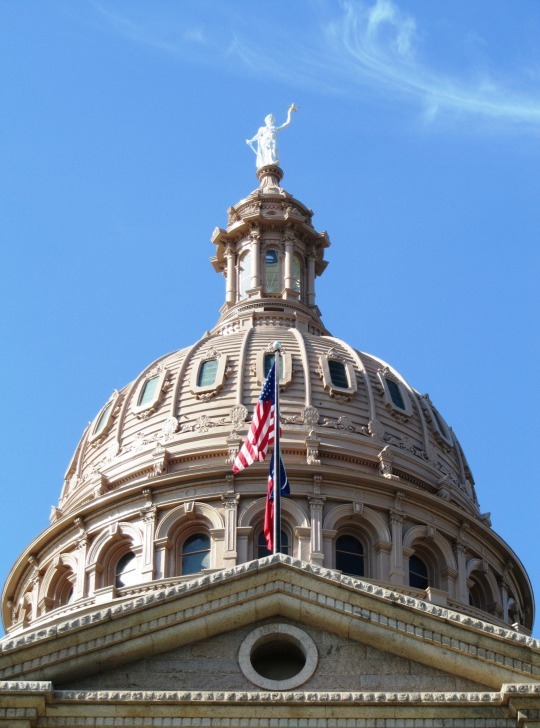










Texas was admitted as 28th state of the Union on December 29, 1845.
#Texas#28th US State#29 December 1845#original photography#landscape#countryside#cityscape#architecture#prairie#Adrian#Midpoint Route 66#Palo Duro Canyon State Park#summer 2014#travel#vacation#USA#Austin#Texas State Capitol#Alamo#San Antonio#anniversary#US history#Cadillac Ranch#Gulf of Mexico#Corpus Christi#Langtry#Pecos River High Bridge#Prada#tourist attraction#landmark
9 notes
·
View notes
Text

The ITV 1978 mini-series Lillie, portrays the life of Lillie Langtry. The story spans Langtry’s entire adult life from age 16 in 1869 to her death in 1929. Francesca Annis plays the main character.
In episode 7 of the series, Francesca wore a Pink bustle gown.

This gown has a special history after the TV series — it was later worn by Diana, Princess of Wales. For a royal tour of Canada in 1983, a “Klondike period” gala was held in Edmonton. Diana chose this dress from CosProp designed by Linda Mattock, and John Bright created a new hat for her to go with it.
#royalty#british royal family#brf#britishroyalty#princess of wales#the princess of wales#princess diana#lady diana#Diana#lillie langtry#Lillie#francesca annis#Klondike period#pink gown#victorian style#victorian#vintage
18 notes
·
View notes
Text

Lillie Langtry (Francesca Annis).. Lillie (TV Mini Series 1978).
10 notes
·
View notes
Text
Edward Poynter, Mrs. Langtry, 1878

4 notes
·
View notes
Text
Edward Poynter, Mrs. Langtry, 1878
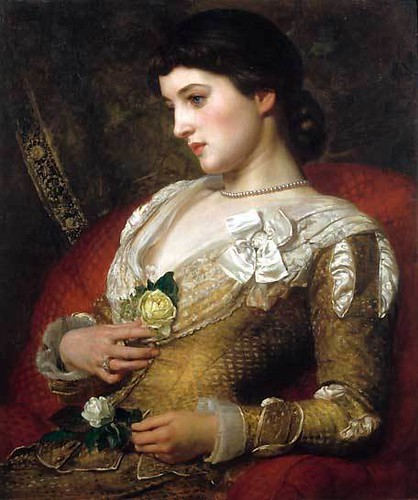
5 notes
·
View notes
Text
Fleeced
Life, (New York), March 11, 1886, No. 167. —The Question of Copyright— Speaking of copyright, as I was in my recent post about The Sarony Case, reminds me that the 1880s was a vexed period for authorship rights, and matters could get a little fraught. Continue reading Untitled
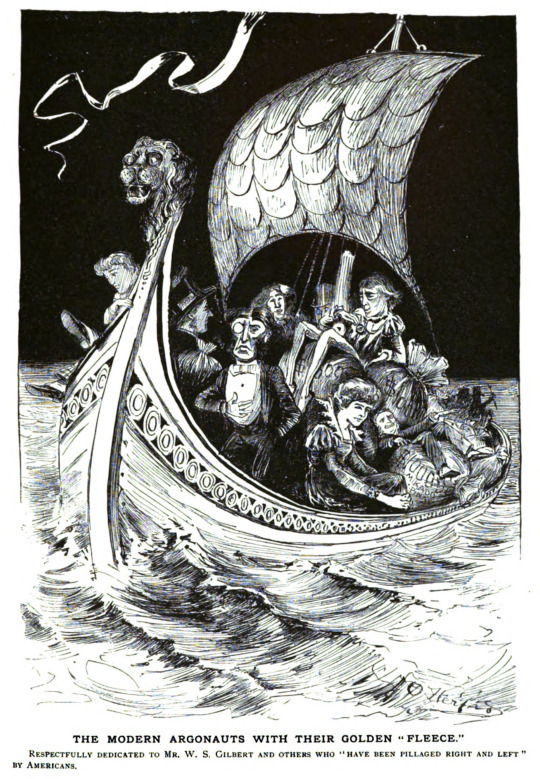
View On WordPress
#Oscar Wilde#cartoon#Copyright#Frederic Farrar#gilbert and sullivan#Harper and Brothers#henry irving#Life Magazine#lillie langtry#Matthew Arnold#Oliver Herford#W.S. Gilbert
2 notes
·
View notes